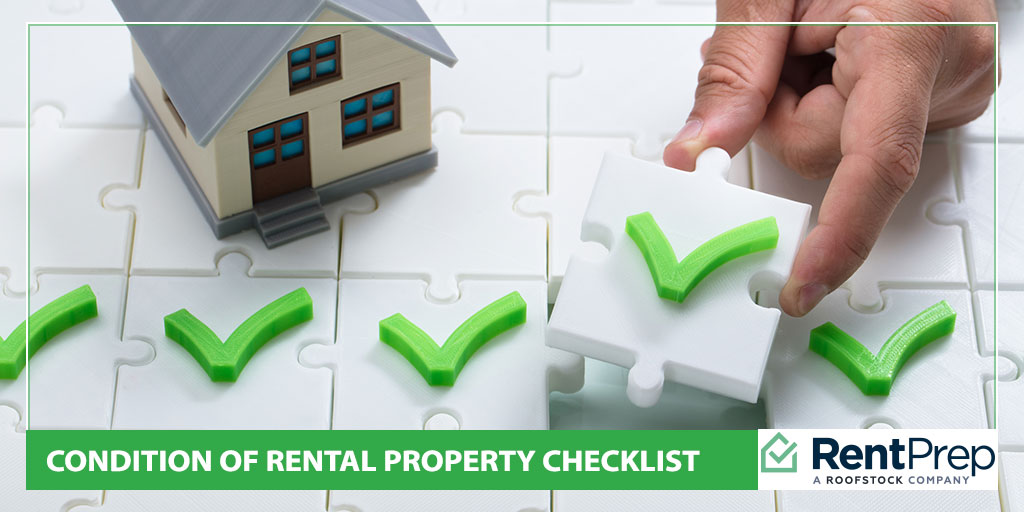
There are hundreds of tasks landlords must complete. New landlords like you, in particular, may accidentally let a few of these things slip through the cracks. Are you aware that you need to keep a checklist ready to check on the status of your properties?
When tenants are moving into or out of your property, it is essential that you go through a condition of rental property checklist to ensure that both you and the tenant are fully aware of the property’s condition.
After all, tenants don’t want to risk being blamed for damage they did not do, and you do not want to give back a security deposit without doing a full overview of your property. Damages left behind by tenants can end up costing you out of pocket money, and these damages can be in hidden areas that you might forget to check before releasing their deposit.
Don’t let your business be hit with unnecessary losses. By using a rental house condition checklist, you can protect your business and address potential issues more quickly.
Here’s what you need to know.
A Table of Contents For Property Condition Checklists
- Why It Matters
- What To Include On a Rental Property Condition Checklist
- When To Use A Rental House Condition Checklist
- How To Properly Document The Condition
- Prepare For The Worst
Why It Matters

Fresh landlords are apt to believe that they can do a quick once-over with their eyes to know if the property has been kept in good condition during a rental period or not. While it might be true that some damage will be obvious to the eye, just seeing it isn’t always enough.
There are a few main reasons why it is important that you fully document the condition of a property both before and after a tenant is living there:
- Proper documentation helps if there is an issue of liability for insurance issues.
- Proper documentation ensures that you can be paid back for damages done by the tenants if a court must be involved.
- Checklists help you to be sure that you don’t miss any areas of the house.
- Having tenants sign off on both the before and after keeps everyone happy as you work with good communication.
- Your memory might fail you, but your documentation will not. If you have it written down, it will be easy to compare the before and after without any questions of truth.
What To Include On a Rental Property Condition Checklist
To put it lightly, there are a lot of things that you need to include on a rental property checklist. If you’re renting out a furnished property, your list just tripled. But don’t let the thought of documenting all of this overwhelm you.
Instead, remember that your documentation serves an important purpose for protecting both you and your tenant’s best interest. By being thorough, you will save yourself from future headaches.
The Basics
Before you get into documenting specific fixtures or features, you first need the checklist to include important information about you, the tenant, and the property.
Be sure to include the following in every rental checklist:
- Tenant’s name & address
- Move-in date
- Date of move-in inspection
- Move-out date
- Date of move-out inspection
- Tenant signature
- Landlord name & address
- Landlord contact information
- Landlord signature
In addition to this basic information, you will also want to include specifics of each room, which we will outline below.
Room-by-Room, Feature-by-Feature
Let’s go through the basic specifics that you may want to address for your rental property. While this list will attempt to be inclusive, remember that every property is different. Be sure to make adjustments for your property to ensure that you do not miss anything important.
Living room/family room/dining room/bedrooms
- Floor
- Walls
- Ceiling
- Door & door hardware
- Windows & window hardware
- Closet fixtures
- Window coverings
- Lighting fixtures
- Smoke & carbon monoxide detectors
- Heat & air conditioning units
- Outlet covers
- Fireplace
- Any included furniture
Kitchen
- Floor
- Walls
- Ceiling
- Door & door hardware
- Windows & window hardware
- Lighting fixtures
- Smoke & carbon monoxide detectors
- Heat & air conditioning units
- Outlet covers
- Appliances (check lights, handles, and appliance hardware for each item)
- Sink & plumping
- Cabinets & hardware
Bathrooms
- Floor
- Walls
- Ceiling
- Door & door hardware
- Windows & window hardware
- Window coverings
- Lighting fixtures
- Smoke & carbon monoxide detectors
- Heat & air conditioning units
- Outlet covers
- Shower & tub
- All caulking
- Toilet seat & bowl
- Vanity
- Plumbing
- Faucets
- Mirror
- Any included furniture
Exterior
- Anything on the front or back porch, including railing
- All lighting fixtures
- Mailbox
- Driveway
- Garage
- Siding
- Windows
- Steps
Pre-made Checklist Example
This condition of rental property checklist doc is a great resource to use if you are still unsure about what to include on your checklist. There’s even extra space where you can edit in additional rooms or features before printing.
How To Conduct A Successful Rental Inspection

Now that you have your checklist put together, it’s time to actually put it to use! Having the checklist will make this step easier, but it’s still important that you know how to do a great walkthrough to ensure future success.
- Make sure you are ready to take good photos. Camera phones will suffice, but you should install an app that will timestamp and location stamp your photos.
- Meet with the tenant to do the move-in or move-out inspection.
- Go through the property room by room and document everything included on the checklist.
- If you discover that you missed something on the checklist, take a photo and add it to the list.
- When taking photos, follow a consistent and logical order. If you forgot anything and go back to get it, make a note of this.
- Take photos of product manuals and appliance serial numbers.
- Take videos to demonstrate that something is working properly (i.e., a sink drain).
- Take written documentation to explain any present damages, whether they are there before a tenant moves in or after they move out. Make note of if you will repair the item or not before they move in.
- Have the tenant sign off on the document.
As you manage more properties, you’ll learn more about what a checklist should do for your business. Until then, these bonus tips should help you!
When To Use A Rental House Condition Checklist
Many landlords choose to keep the documentation for both move-in and move-out inspections on one document or file. This makes it easy to compare the condition from before to after without having to search through multiple documents.
Whether you decide to use a single document or to split to two separate checklists, be sure that you are as thorough as possible.
You need to do a walk-through with tenants at least twice during the time that you are working with them:
- Before tenants move in
- After tenants move out
How To Properly Document The Condition
As briefly mentioned above, it is important you do more than just fill out a checklist. While this might seem like enough, a simple checklist won’t stand up in a court if you don’t have things fully and properly documented.
Photos
Photos are a must, and the photos must clearly show the before and after of any damages that you are claiming against a tenant to be valid. Using a phone camera is fine, but be sure that you also have a timestamp to add legitimacy to your photos.
Additionally, do not lose the files! Make sure that you keep a backup copy on a disc or other form of external storage until they are no longer relevant. If you lose the files, you’ll have nothing but your word to support your statements.
Signatures
Both you and your tenant must sign off on any and all inspections that occur. If you have someone else do the inspection for you or the tenant has a friend go to the inspection in their place, you must also have written documentation that all parties are in agreement to this substitution.
There are some benefits to doing the move-out inspection without the tenant, but most landlords agree that they should be present.
Prepare For The Worst
As a landlord, you never want to assume that a tenant is going to damage your property. But in the real estate game, you want to stick to “better safe than sorry” mentality. Completing full documentation using condition of rental property checklist tactics is key to your future success.
Don’t forget these important points:
- Complete both move-in and move-out inspections with your tenant.
- Make sure that you both sign off on all documentation.
- Use a camera phone app that allows you to timestamp your photos.
- There’s no such thing as too thorough during an inspection.
With these tips, you’re sure to have the best documentation checklist around!

